The chainsaw roars to life and the stench of gasoline fills the air. Steel meets hardwood, and dust pulses from the wound like arterial spray, raining down onto the clay soil as the blade cuts deeper into the massive dipterocarp.
Then the tree groans. It falls — seemingly in slow motion as wood splinters and earth rips — tearing down vines and obliterating smaller trees beneath its bulk. And then comes the silence, punctuated by the dying sputters of the chainsaw.
I’m deep in a logging concession in Indonesian Borneo, and I’ve just witnessed the routine harvesting of a dipterocarp tree bound for the plywood mill. Vast stands of selectively logged forest still remain, but many parts of Indonesia are transitioning from forestry to more intensive land uses, like oil palm and acacia plantations. And with those changes come impacts to the region’s biodiversity and ecosystem services.
Nature Conservancy scientists are using bioacoustic analyses — first tested last year in Papua New Guinea — to help untangle how different types of land uses affect biodiversity here in Borneo.
The Four Dark Horses of Deforestation
Indonesia’s forests are more than 140 million years old — the oldest tropical forests on earth. And though they only cover about 1 percent of earth’s surface, their biodiversity is staggering: 10 percent of the world’s plants, 12 percent of mammals, 16 percent of reptiles and amphibians, and 17 percent of birds are found here. But like their counterparts in equatorial Africa and the Amazon Basin, these forests are also a valuable and necessary economic resource. And they’re disappearing.
“There are four main drivers of deforestation in Indonesia: timber, oil palm, mining, and the pulp paper industry,” explains Zuzana Burivalova, a tropical forest ecologist and postdoc at Princeton University. “We call them the four dark horses of deforestation.”
Between 2000 and 2010, Indonesia lost 14.7 million hectares of forest, and Burivalova says these four industries accounted for 44.7 percent of forest loss in Indonesia’s five main districts during that time. (The rest was lost due to rubber plantations, small-scale agriculture, and village development). With many selective logging concessions transitioning to more intensive land uses, conservationists are looking to improve land-use planning to balance biodiversity conservation and resource production.
The question is simple: is it better to use one portion of the land intensively and protect the rest (sparing), or is it better to lightly use a vast majority of the land (sharing)?
In East Kalimantan, simplified land sparing takes the form of a combination of protected forest and intensive acacia or oil palm plantations. Meanwhile, the basic land-sharing option would be low-intensity selective logging across all or most of the landscape.
But figuring out if sharing or sparing is better for biodiversity in one locality — with existing industry and land uses already in place — is a complicated puzzle. And the effect of each strategy could vary depending upon the exact combination of land uses, how they are implemented, and how they are organized spatially across the whole landscape.
And that’s where acoustic data comes in.
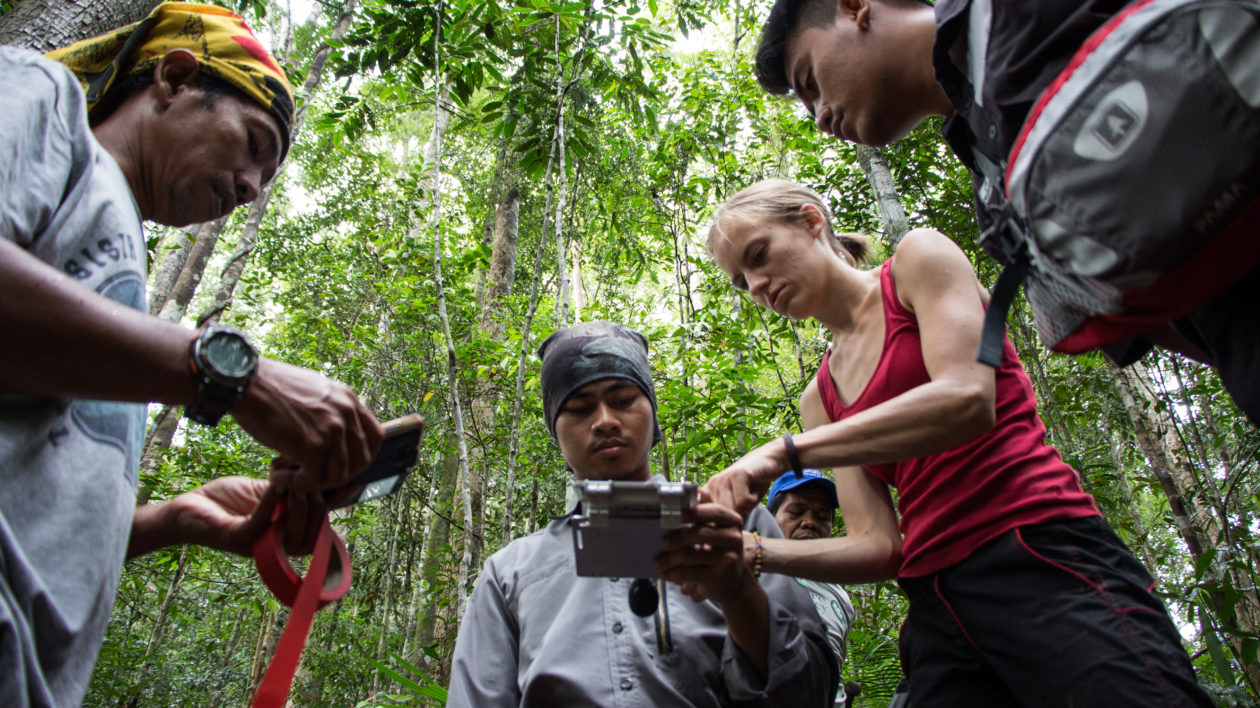
Transforming Animal Communication into Biodiversity Data
The forest is never silent. Assaulted at first, your senses struggle to separate sound from the torrent of noise. But gradually the roar subsides and sounds sift out from the chaos. We hear slender-billed crows calling from a honeybee tree — deep and rasping — while a hidden barbet belts out its hypnotic staccato chirp. And all these notes play on against a backdrop of wailing cicadas and the occasional howling gibbon.
From overhead comes the roar of helicopter-like wingbeats and a raucous honking echoing from the trees. “Hornbill,” whispers Purnomo, a conservation field officer in the Conservancy’s Indonesia program and research lead. They fly fast, and within seconds the forest swallows their calls.
With hundreds of species vocalizing simultaneously, the noise in this forest is overwhelming. So different species evolved to communicate at different frequencies, or acoustic niches, so that individuals of one species can hear each other over the roar of communication. Because each species has its own specific frequency, scientists can calculate a rough measure of biodiversity — and therefore ecosystem health — by recording the forest soundscape over 24 hours. And those soundscapes are they key to understanding changes in a working landscape.
Burivalova, together with Conservancy scientists Timothy Boucher, and Eddie Game, previously used bioacoustics to evaluate the effectiveness of community land-use planning efforts in Papua New Guinea. There, preliminary results show both that the acoustic sampling could effectively measure differences in forest biodiversity, and that areas set aside for conservation under the community land-use plans are more biodiverse than others.
The team is now training the Conservancy’s Indonesia scientists and field officers to use similar methods in Borneo, where the soundscape data can help the Indonesia program understand how various land-use intensities affect forest biodiversity.

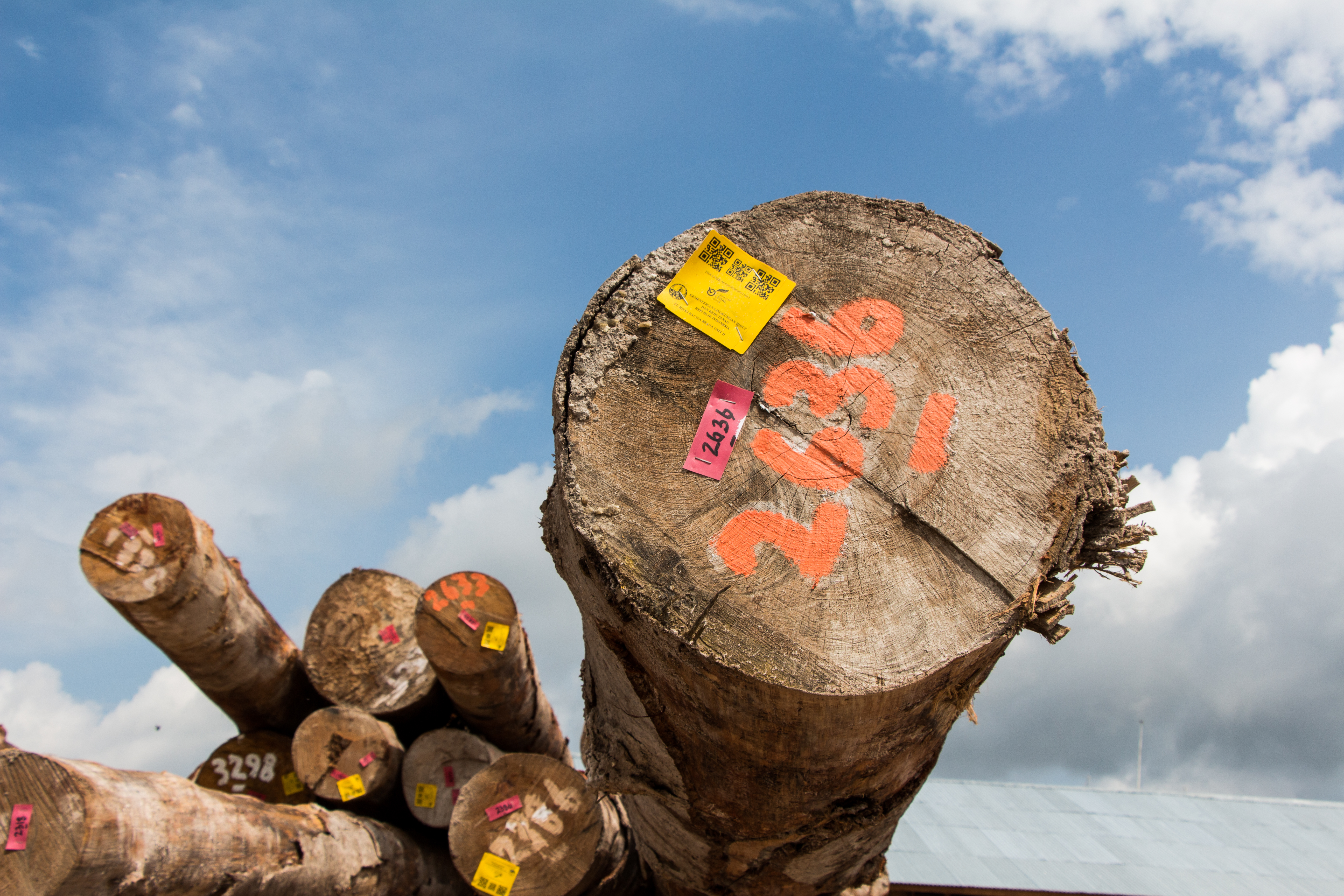
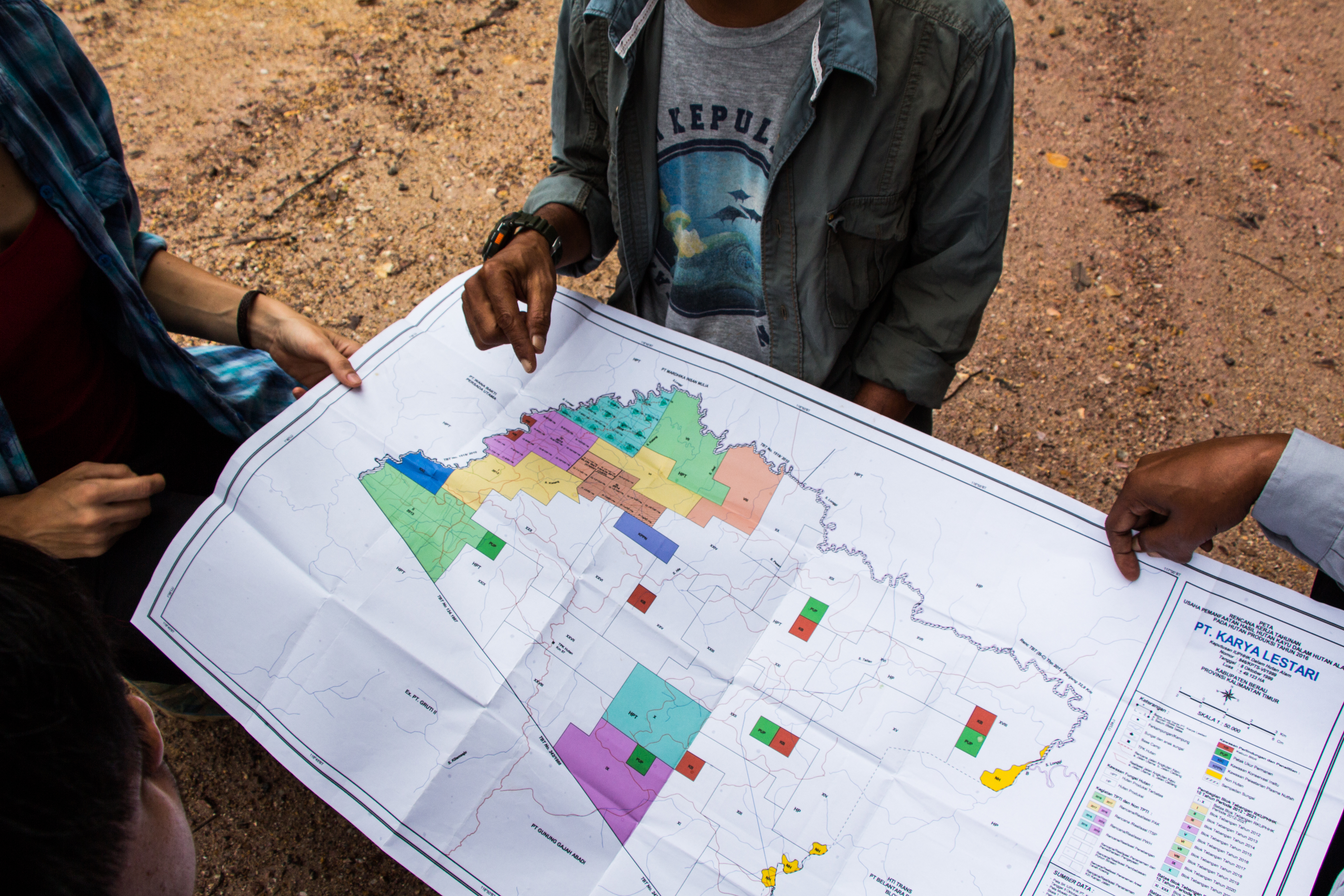

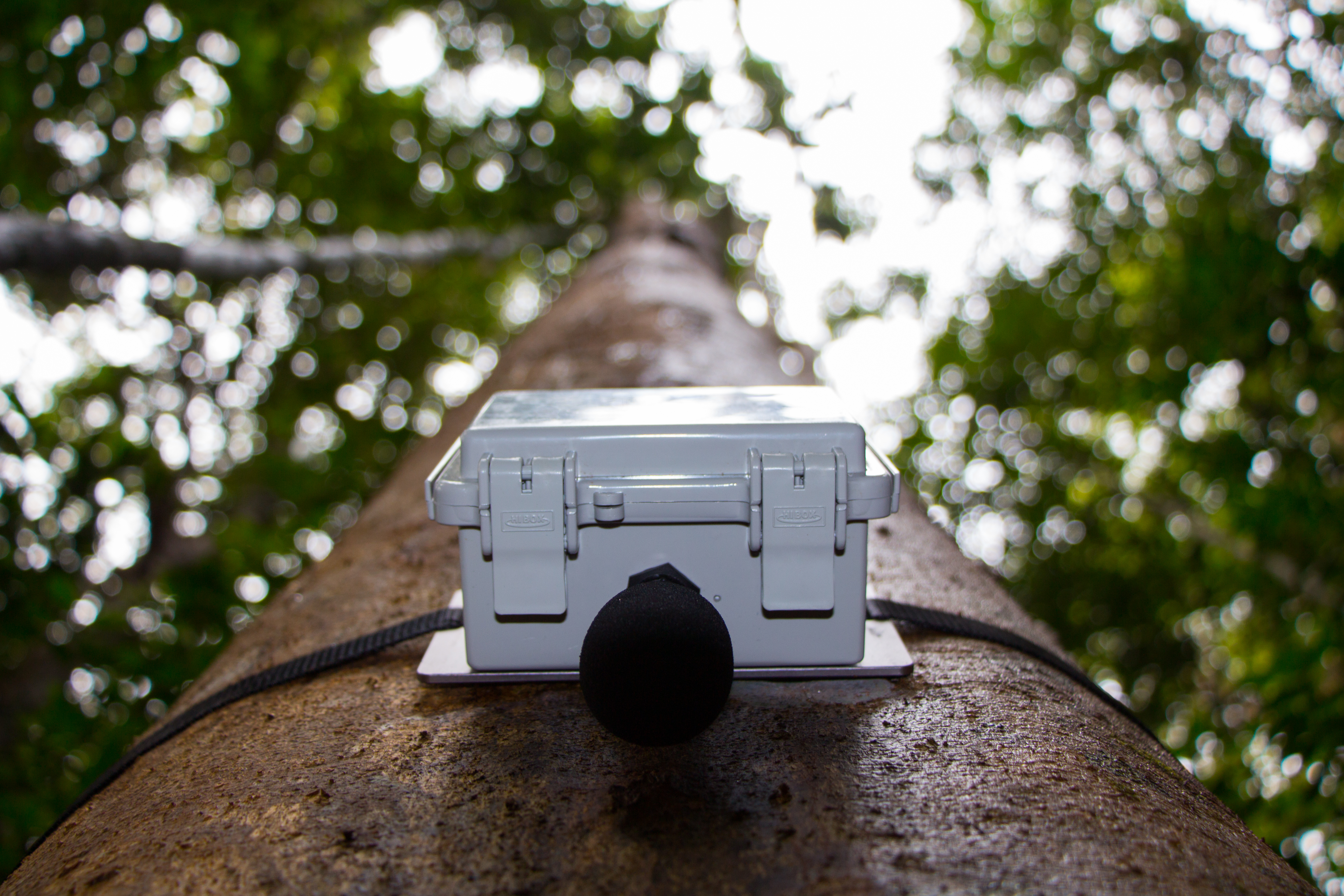
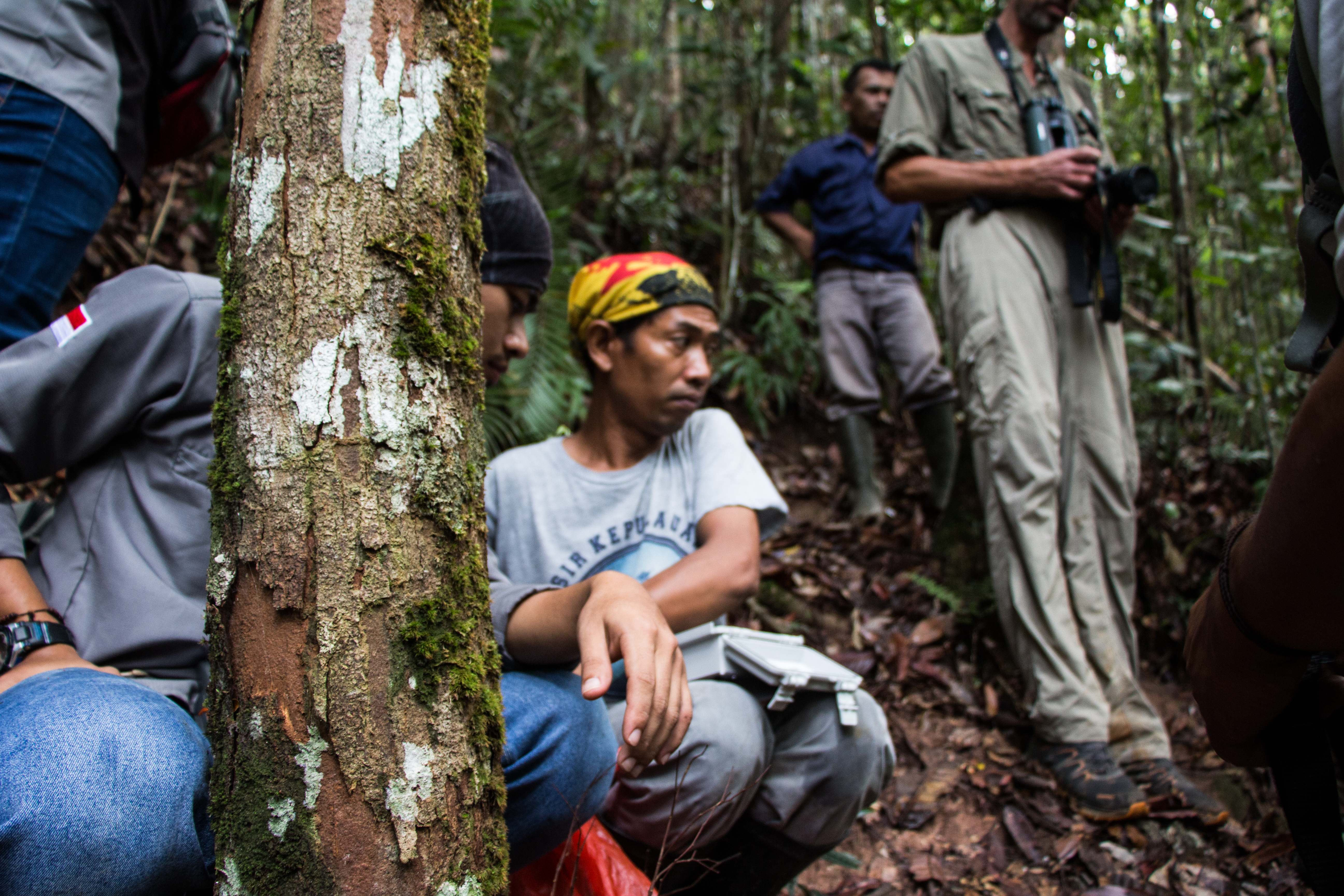

Measuring Soundscapes and Species Diversity
Today we’re in Karya Lestari, a 47,000-hectare conventional logging concession. Purnomo explains the research plan as he and Jasari, also with the Conservancy’s Indonesia program, fasten a recorder to the tree. “We put out recorders in 60 sites last week in Wehea and Gunung Gaja Abadi,” Purnomo says, referring to a protected forest with an orangutan population and a twice-logged concession that practices harvesting strategies designed to reduce forest degradation and waste, known as reduced-impact logging. The researchers also collected data in both oil palm and acacia plantations.
First, the research team will partner with scientists at the Queensland University of Technology to examine soundscape saturation. This measurement shows what percentage of the frequency spectrum is filled with sound at each minute during the day, which is correlated to the number of species. That analysis allows them to compare species richness at multiple sites, both within one logging concession and between different logging intensities or land-use types.
The second analysis will focus on species similarity. Two different locations in the forest might have 100 bird species each, but are they the same 100 species in each site? Species diversity might be similar across the whole forest or it could vary quite a bit from location to location. The team will use a different acoustic index to create a sound profile for each site, allowing them to compare species similarity between sites.
Another puzzle is how species composition changes when a forest is logged. Previous research across the tropics has measured species loss after forests are selectively logged or converted to plantations, allowing scientists to roughly estimate the proportion of species lost depending on the logging intensity. But those measurements apply to all of the tropics, so the acoustic surveys will provide a more precise figure for Berau.

“But the way biodiversity reacts to logging is more complicated than just a reduction in species numbers,” explains Burivalova. If a logged forest loses 20 of 100 species, they could be the same 20 species across the whole forest, or a different 20 species at each site.
Measuring species similarity between different parts of the forest — or beta diversity — is further complicated by invader species. Many of those 20 lost species might be forest specialists, like the great argus (Argusianus argus) or the scaly-breasted bulbul (Pycnonotus squamatus). But increasing forest edges and invasive species might introduce 10 new, generalist species to the forest that aren’t usually there, like the thick-billed green pigeon (Treron curvirostra) or black-hooded oriole (Oriolus xanthornus). If that’s the case, then standard biodiversity estimates would only show a 10 percent loss, when really the net loss of interior forest species is greater.
“That’s the core of the beta diversity question, asking whether these patches of forest are becoming more similar because you are getting non-forest species coming in,” says Burivalova. “Nobody in the scientific community really knows what happens at a large scale, so we are trying to help the Indonesia program find out how biodiversity responds to these different land uses at different intensities across the whole landscape.”
Eventually, the team will conduct a third analysis using species-recognition algorithms to compile a list of all audible species at each site, allowing them to cross-check both the soundscape saturation and similarity analyses.
Planning for Nature and People
Back in the trucks we drive on, over slippery clay roads cut into the heart of the forest. This cutting block was last logged three years ago; our route is frequently blocked by fallen trees and fast-growing liana vines carpeting the road. Thoughtful and focused, Purnomo tracks our progress on the GPS and calls out a stop after 1 kilometer. We walk straight into the trees from the road as Purnomo and Jasari mark our route with streamers of red tape tied to the underbrush.
The bioacoustics research is part of a larger effort — funded by the Science for Nature and People Partnership (SNAPP) — to investigate how to best achieve conservation and benefits for people in tropical timber production landscapes.
The SNAPP group is conducting research to understand how forest sharing vs. forest sparing affects a variety of conservation goals in Berau, including biodiversity, hydrology, human-well being benefits, and carbon storage and sequestration. These data will then be incorporated into a province-wide planning analysis for Berau.
The analysis will guide the Conservancy’s strategy in Berau and help the government of East Kalimantan manage their forest land to both meet timber production and other economic goals, while still protecting biodiversity and critical ecosystem-service benefits, like flood mitigation, forest products, and carbon storage and sequestration.
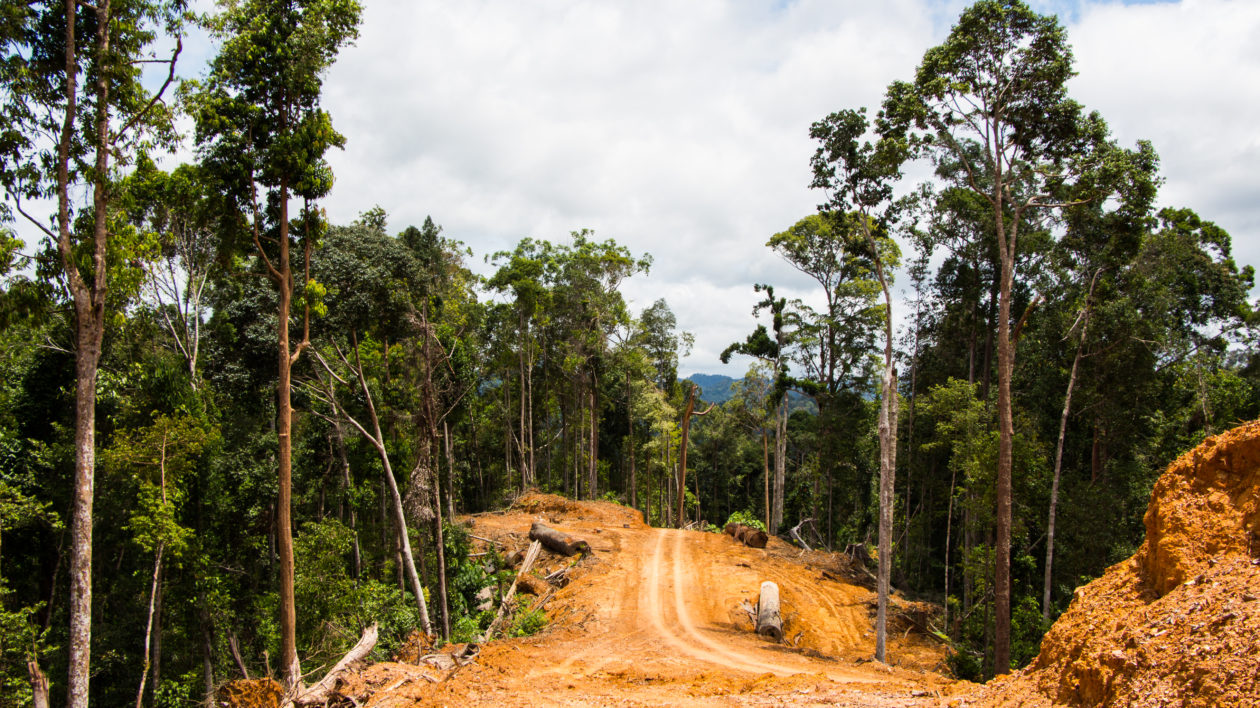
The shaking subsides, and the bulldozer moves into place. One logger walks the length of the tree and carves off the crown, while another loops a wrist-thick steel cable around the the trunk. The engine revs, the cable tightens, the trunk shifts. And then with a final pull the trunk slides across the skid trail, shedding bark as it carves a deep, smooth furrow into the yellow clay. The bulldozer trundles back through the trees to the road, where a crane will stack this trunk neatly with the others.
What we’ve witnessed here happens hundreds of times each day throughout Indonesia’s forests. And the acoustics data will help ensure that each tree cut, or each hectare cleared, gets the maximum benefit possible out of this rich land with the least impact on biodiversity.



Join the Discussion